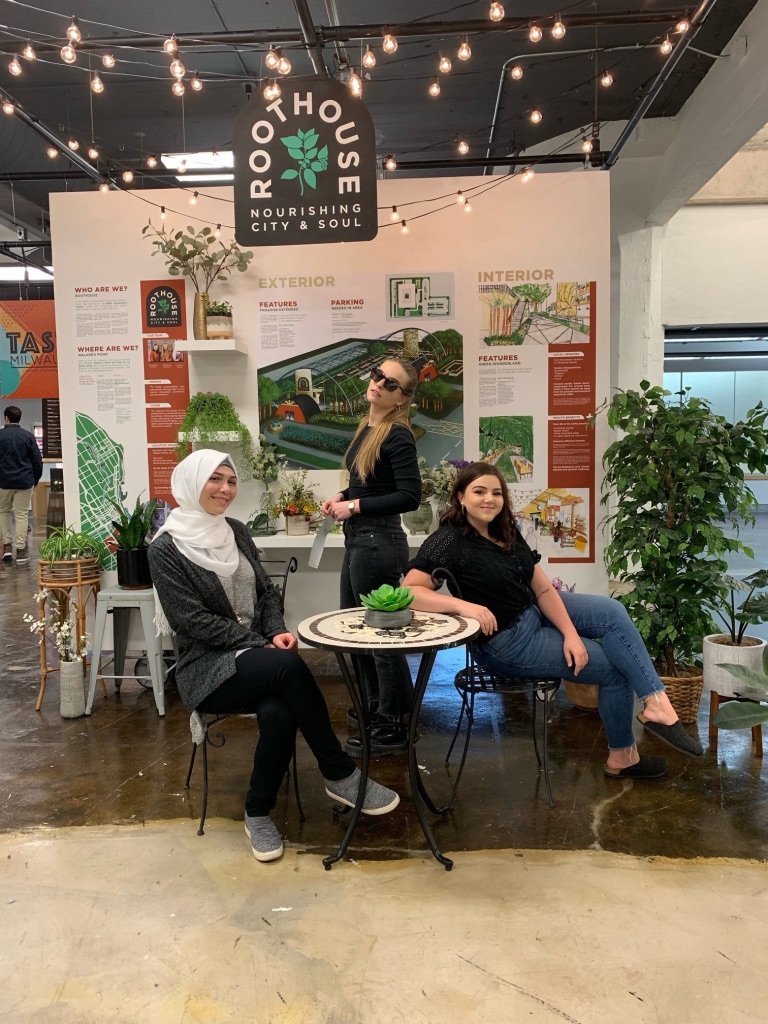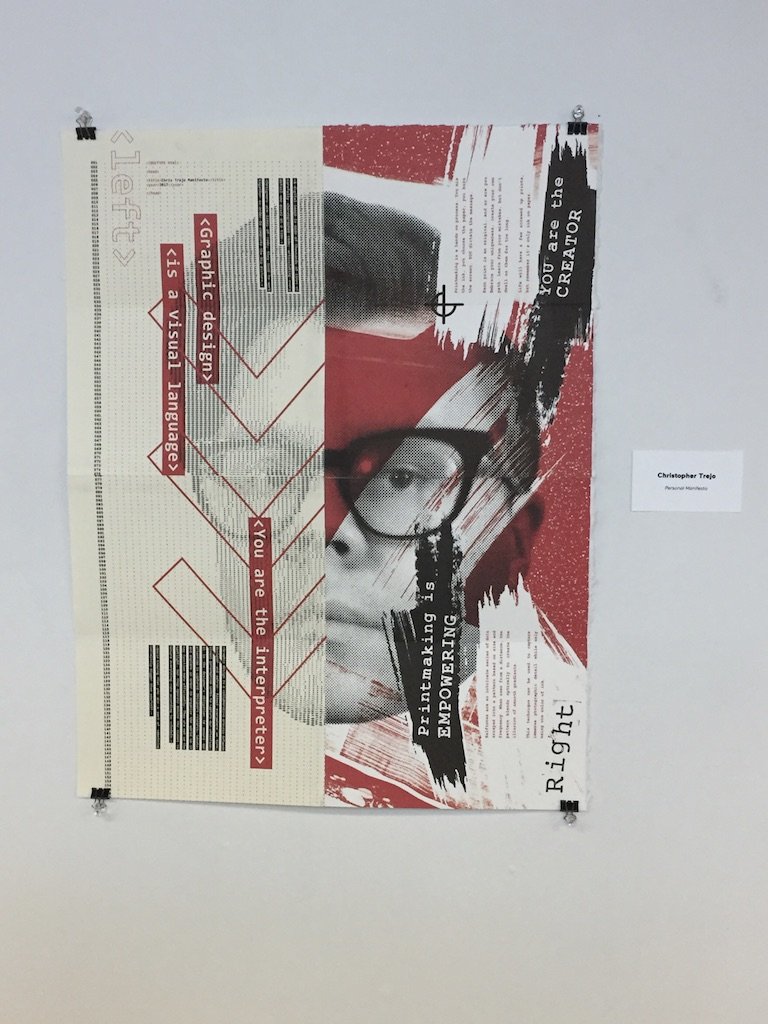Design and Visual Communication III
UWM Equity-Centered Community Design Group Project exhibit at BFA Capstone Show
UWM Student Donovan Green
Overview
This course will focus on preparing students to enter industry. To this end, attention will be given to writing and designing artifacts that relate directly to obtaining a full time position in the field. A high level of creativity and professionalism is a must. Projects will include a group project, manifesto, and a designed process book to be displayed at the BFA showcase, in-class and written discussion and development of a capstone showcase (which includes the following: Branding, website, social media, development of way-finding and exhibit materials and personal materials).
2021 BFA Capstone Online Exhibit The Dandelion Effect
OBJECTIVE
Demonstrate design thinking and making skills
Demonstrate the ability to determine design priorities and alternatives: research, define, and evaluate criteria, and requirements
Evaluate message context and appropriateness
Deliver compelling visually driven stories through design experiences
Formulate a personal design manifesto
Apply professional practices strategically
Solve communication problems with invention and clarity
Demonstrate self-reflection in your creative attitudes and abilities
Work in teams to further collaborative skills.
Prepare for transition to professional design practice.
student feedback
MAnifesto
WRITING COMPONENT:
Utilizing the resources provided as a guide define/frame/shape your essential creative vision/principles/convictions and ultimately communicate why you are a designer and what you stand for... personal design manifesto.
Man•i•fes•to (noun) – A public declaration of policy and aims, esp. one issued before an election by a political party or candidate. While you may never go into politics or try to take over the world, writing a manifesto is a great way to:
Clarify your beliefs
Examine your motivations
Create personal “policies”
Describe what kind of world you’d like to live in
Write down your goals
Distilling these “policies and aims” down on paper helps you think about what you truly want out of life, which in turn helps you:
Make good decisions
Evaluate opportunities
Stick to your priorities when conflicts arise in your schedule
VISUAL ARTIFACT:
Based on what you construct in terms of the written framework, develop a corresponding design project that actively translates and transforms your beliefs into a artifact that visually reflects/illustrates the words. This new work will be digital, static or dynamic, it should be experiential, consider sound, animation, think about how you can engage the viewers senses. This will be installed on our online web-based exhibition.
UWM Equity-Centered Community Design Group Project exhibit at BFA Capstone Show
UWM Student Christopher Trejo
EQUITY-CENTERED COMMUNITY DESIGN
Equity-Centered Community Design is a unique creative problem-solving process based on equity, humility-building, integrating history and healing practices, addressing power dynamics, and co-creating with the community. This design process focuses on a community’s culture and needs so that they can gain tools to dismantle systemic oppression and create a future with equity for all.
If we were to transform the ecosystem of inequity through design in our community to make a change that will impact an under-served group of people or the environment in our city, what could Milwaukee become? Could it be a stronger more inclusive community? Could it better promote the creative spirit of all it’s people, or enhance the vibrancy of our city?
Researching Community history
Inviting diverse co-creator
Acknowledging + dismantling power construct
Defining + assessing the topic/community needs
Developing the vision for your equity-centered
Community design project
Groups of 4-5 students work together to develop a creative brief addressing community issues that they are passionate about using a co-creation equity centered community design process.






